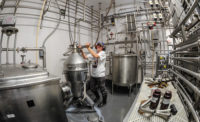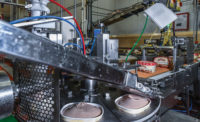With election year fever approaching a crescendo, Americans are gathering information about the candidates from debates, conventions, campaign ads and media pundits. Each voter must decide whose facts make the most sense.
It’s not unlike choosing the best culture for the fermented-milk products you make. Dairy cultures are critical in determining the sensory character, performance and economics of the finished product. Differences in “culture” can also impact how the product is perceived by the user.
Careful selection of the bacteria may play a significant role in the health and wellness of the end user. Like re-electing our nation’s leaders for a second term, the ability of cultures to live up to their promises will determine if you reuse them again.
But unlike the two-party system where the primaries help to narrow the field of choices, we are presented with the full range of available alternatives before making our final decision. But if a culture does not live up to its reputation or characterization, you can switch fairly quickly to other cultures. (Perhaps we should pass this on to our political process!)
However, making changes comes with a cost and there is no guarantee that the change will be any better. And like our political elections, the selection of the best cultures for our fermented-milk products may not really be as simple as some might make it to appear.
How cultures differ
Cultures from suppliers each have platforms that describe the many basic key attributes they can deliver. For example, there is low versus high viscosity; milder versus stronger flavor; low versus high post-acidification. Some suppliers have developed cultures for specific market segments. Others try to provide something for everyone in one package (sound familiar?).
Unfortunately consumers (the electorate) are not all the same. Depending on their needs you might produce different products (a drinkable yogurt versus a spoonable yogurt, for example) that will require different cultures to deliver the desired attributes. Some consumers like more tart-tasting yogurts while others reject excess sourness.
If you are trying to grow or maintain market share for your product line, you must identify which cultures can provide the best balance of each of these attributes for each specific product using your milk supply and under your process condition in a predictable and consistent manner 365 days a year.
For example, if the culture is unpredictable and produces too much viscosity prior to processing in Greek yogurt manufacturing, separating efficiency can be compromised and productivity goes down the tubes.
For some people, name recognition is important. Consumers are increasingly reading product labels and looking for their favorite culture names because they may have learned about its touted unique health benefits. They also look for simple, clean labels and are on the alert for ingredients they do not want. This is where selecting the right cultures can help to reduce the use of these other ingredients (like starches, stabilizers and preservatives).
Sorensen et. al., (2016) recently reported on the use of selection techniques to isolate yogurt bacteria that only ferment galactose and leave glucose untouched. By using the new yogurt bacteria isolates, it is thought that having residual glucose (which is sweet) in the fermented milk can reduce the amount of added sugar (sucrose) to provide sweetness in flavored yogurts.
This may be quite timely given the recent decisions to highlight added sugar on nutrition facts panels. Availability of commercial preparations of cultures with these characteristics is about a year away. Nonetheless, development is moving forward of cultures for specific metabolic products to deliver improved shelf life, texture modification, specific flavor profiles and targeted health benefits.
Recent studies (Lee et.al, 2015a; 2015b) suggest that Lactobacillus casei’s efficacy as a probiotic is better in milk.L. casei BL23 is thought to improve immune function and reduce intestinal inflammation. The studies demonstrated that L. casei survival in mouse GI was better when pre-incubated in milk and was better at preventing intestinal inflammation. This supports the notion that milk is a preferred delivery system for probiotic benefits.
What cultures will win?
Consumers vote with their pocketbooks. Cultures can influence the key product attributes they seek. If they like the taste/texture of the product and it delivers value at the right price point, in the right package, and contains the right benefits in a form that is right for the eating occasion, you will always get their vote in the polling booth called the dairy case.
Who will you endorse? Communicating a product’s attributes to the target market segment, putting out a consistently good product that best considers what the public wants, and using the best available technologies that is right for the times may help you inaugurate the next fermented-milk product winner in the marketplace.
So do your homework and exercise your right to vote!








